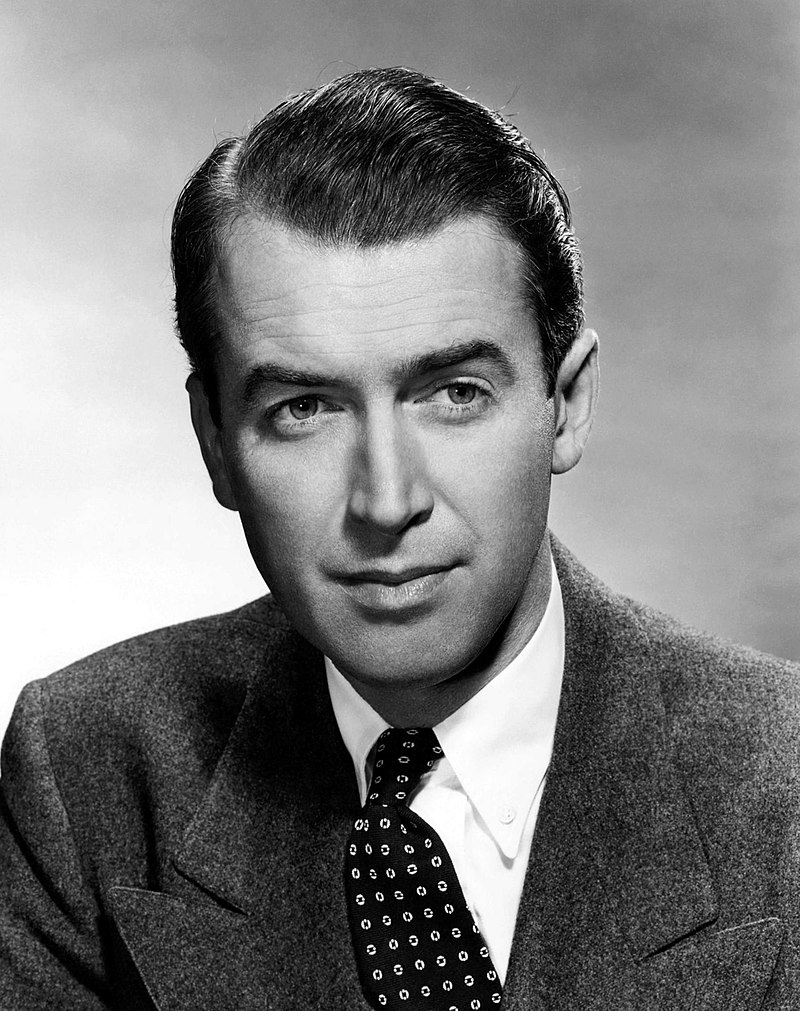James Stewart (1908–1997) was an iconic American actor known for his distinctive voice, down-to-earth persona, and versatile performances in a wide range of film genres. Born in Indiana, Pennsylvania, Stewart began his acting career in the 1930s and became one of Hollywood’s most beloved and enduring stars. Some of his memorable roles include performances in classic films like “It’s a Wonderful Life,” “Mr. Smith Goes to Washington,” “Vertigo,” and “Rear Window.” Throughout his career, Stewart received numerous accolades, including an Academy Award for Best Actor, and he remains a celebrated figure in the history of American cinema.
Stewart’s early years were rooted in a small-town upbringing. Raised in a close-knit family, he developed an interest in aviation and earned a private pilot’s license before attending Princeton University. However, his passion for acting began to emerge during his time at Princeton, where he participated in various stage productions.
After graduating with a degree in architecture, Stewart briefly worked in the field but soon found himself drawn to acting. He began his journey in the theater, honing his craft in various productions on Broadway. His breakthrough came in 1934 with the play “Divided by Three,” leading to a contract with MGM Studios.
In 1935, James Stewart made his film debut in “The Murder Man,” but it was his role in “The Shopworn Angel” (1938) that caught the attention of audiences and critics. His genuine and relatable performances endeared him to viewers, setting the stage for a prolific career in Hollywood.
Stewart’s early years in Hollywood showcased his versatility as an actor. From romantic comedies like “The Philadelphia Story” (1940), where he starred alongside Katharine Hepburn and Cary Grant, to dramatic roles in films such as “Mr. Smith Goes to Washington” (1939), directed by Frank Capra, Stewart demonstrated a range that would become a hallmark of his career.
World War II interrupted Stewart’s rising stardom, as he enlisted in the United States Army Air Forces in 1941. Rising to the rank of colonel, Stewart flew numerous combat missions over Europe and was awarded the Distinguished Flying Cross twice. His wartime service not only showcased his courage but also deepened his connection with the American public.
Returning to Hollywood after the war, James Stewart resumed his acting career with a newfound maturity and depth. He collaborated with Alfred Hitchcock on several occasions, creating some of the most memorable films in both their careers. “Rope” (1948), “Rear Window” (1954), and “Vertigo” (1958) highlighted Stewart’s ability to portray complex and conflicted characters.
The 1950s marked a period of continued success for Stewart, with notable roles in films like “Harvey” (1950), where he played Elwood P. Dowd, a man whose best friend is an invisible 6-foot-3½-inch tall rabbit. His performance earned him an Academy Award nomination for Best Actor. Stewart’s everyman appeal resonated with audiences, making him a beloved figure in American cinema.
In 1955, James Stewart won the Academy Award for Best Actor for his role in “The Philadelphia Story,” solidifying his status as one of Hollywood’s leading actors. His ability to seamlessly transition between comedic and dramatic roles endeared him to filmmakers and audiences alike.
The 1960s brought further acclaim for Stewart, with roles in films such as “Anatomy of a Murder” (1959) and “The Man Who Shot Liberty Valance” (1962). Collaborating again with John Ford, Stewart continued to explore the complexities of human nature in the changing landscape of post-war America.
As the film industry underwent transformations in the 1960s and 1970s, Stewart adapted to the evolving landscape. He transitioned to television, starring in the popular series “The Jimmy Stewart Show” (1971–1972), which further endeared him to a new generation of viewers. Stewart’s warm and relatable presence made him a natural fit for the intimacy of the small screen.
Despite his success in television, James Stewart’s impact on cinema remained enduring. His final film role came in 1978 with “The Magic of Lassie.” After a career spanning more than five decades, he had become one of the most celebrated actors in Hollywood history.
Beyond his acting career, Stewart’s personal life was characterized by a lasting marriage to Gloria Hatrick McLean, whom he wed in 1949. The couple had twin daughters, Judy and Kelly, and Stewart became a stepfather to Gloria’s two sons from a previous marriage. Their enduring marriage was marked by mutual support and stability, a rarity in the tumultuous world of Hollywood.
James Stewart’s contributions to the entertainment industry were recognized with various awards, including an Honorary Academy Award in 1985, “for his fifty years of memorable performances, for his high ideals both on and off the screen, with respect and affection of his colleagues.” The award reflected not only his talent but also his character and the positive impact he had on the film community.
In his later years, Stewart remained active in public life, making occasional television appearances and participating in events celebrating his storied career. He received the Presidential Medal of Freedom in 1985, cementing his status as a national treasure.
James Stewart’s health declined in the late 1990s, leading to his passing on July 2, 1997, at the age of 89. His death marked the end of an era, as Hollywood mourned the loss of one of its most beloved figures. Stewart’s legacy endures through the timeless films that showcase his talent and the enduring impact he had on the art of acting.
James Stewart’s life was a testament to the power of authenticity and relatability in the world of entertainment. His ability to connect with audiences on a profound emotional level, coupled with his versatility and integrity, ensured that his influence would transcend generations. Stewart’s legacy remains as a beacon of excellence, reminding us of the enduring magic of cinema and the timeless appeal of a truly great actor.
